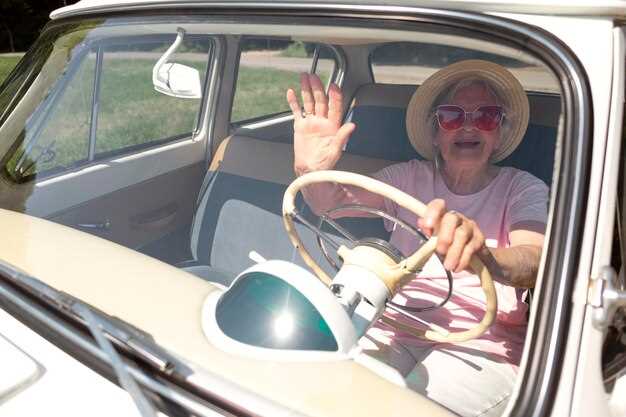
Driving a classic car evokes a sense of nostalgia and brings a unique thrill that modern vehicles often cannot replicate. However, the pleasure of cruising down the open road can be overshadowed by discomfort stemming from outdated technology, limited conveniences, and aging materials. To truly enjoy the vintage driving experience, it is essential to focus on enhancing comfort without compromising the integrity of the classic vehicle.
Comfort is not just about luxury; it’s about creating an enjoyable atmosphere that allows you to connect with your vehicle and the road. By making thoughtful upgrades to your classic car, you can improve aspects such as seating, climate control, and sound insulation. Each enhancement aims to elevate your driving experience, ensuring that long journeys remain pleasurable rather than tiresome.
In this article, we will explore various strategies that can be employed to boost comfort in your classic car. From ergonomic seating adjustments to modern heating and cooling systems, we will look into how these upgrades can bring your beloved vehicle into a new era while maintaining its timeless charm. Whether you use your classic car for leisurely weekend drives or daily commutes, our tips will help you fine-tune your ride for maximum enjoyment.
Customizing Seats for Optimal Support

When it comes to enhancing the driving experience in your classic car, customizing the seats for optimal support is a crucial consideration. Traditional seats often lack the ergonomic design needed to provide adequate lumbar support and comfort over longer journeys.
One effective method of customization is upgrading the seat foam. Stock foam can degrade over time, losing its supportive properties. Replacing it with high-density foam can significantly improve comfort, providing better contour to body shape and reducing pressure points. Memory foam is also a popular option, offering personalized support and adapting to the driver and passenger’s contours.
Add lumbar support by incorporating adjustable lumbar pillows or built-in lumbar adjustments. These features allow drivers to modify their seat position to suit personal preferences, reducing back discomfort during long drives. Additionally, consider seat covers that not only enhance aesthetic appeal but also provide extra cushioning and support. Look for materials that offer breathability and warmth.
Another option is to modify the seat frame itself. Adjusting the height and angle of the seat can improve visibility and reduce fatigue. Consider professional help to ensure that structural modifications are safe and align with the vehicle’s design integrity. For vintage models, specific aftermarket seat kits are available, fitted to maintain the classic look while improving comfort.
Don’t overlook the importance of seat positioning in relation to the steering wheel and pedals. Adjusting the seat to achieve an optimal driving posture can greatly enhance overall comfort and control. Ensure that your legs have sufficient room to maneuver and that the steering wheel is comfortably within reach.
Finally, investing time in customizing your seats can transform your classic car experience, allowing you to enjoy the ride fully without the distraction of discomfort. Focus on creating a seating environment tailored to your body’s needs, making every journey on the open road as pleasurable as possible.
Upgrading Climate Control for Year-Round Comfort
Maintaining an enjoyable driving experience in a classic car often means addressing climate control systems. Older models typically lack the sophisticated climate management found in modern vehicles, making enhancements essential for comfort year-round.
One effective upgrade is the installation of a modern air conditioning system. Replacing aging components with a contemporary unit not only enhances cooling efficiency but also improves reliability. Many aftermarket systems are designed to fit seamlessly into classic car interiors, maintaining the vintage aesthetic while adding crucial comfort features.
When considering heating solutions, evaluate the heater core. Upgrading to a higher capacity heater core can significantly improve the warmth generated inside the cabin during colder months. Pairing this with a quality insulation material helps retain heat, ensuring maximum comfort even in frigid conditions.
Another key aspect is ventilation. Installing adjustable floor vents can help direct air flow more effectively, enhancing air distribution throughout the vehicle. Moreover, integrating newer fan technology can ensure adequate air circulation, providing a consistent and pleasant environment.
For those who prefer a more hands-on approach, consider installing a climate control module. These sophisticated systems allow for precise regulation of temperature and air flow, catering to individual preferences. Such upgrades can also include digital displays for added convenience.
In conclusion, investing in modern climate control upgrades not only enhances comfort in your classic car but also improves overall driving satisfaction. A combination of efficient air conditioning, reliable heating, effective ventilation, and advanced technology creates an enjoyable environment for year-round drives.
Implementing Soundproofing Techniques for a Quieter Ride

One of the key factors in enhancing comfort while driving a classic car is minimizing unwanted noise. Road, wind, and engine sounds can detract from the driving experience. Implementing soundproofing techniques can create a more serene cabin environment.
1. Sound Deadening Materials
Utilizing sound deadening materials is essential for reducing noise levels. Products such as mass-loaded vinyl, butyl mat, or specialized sound-deadening foam are effective. These materials can be installed in various areas, including the floor, doors, and trunk, to absorb sound waves and reduce vibrations.
2. Weatherstripping
Proper weatherstripping is critical for sealing gaps that allow noise to enter the vehicle. Replace old or worn-out weatherstripping around doors, windows, and the trunk. This helps to minimize wind noise and contributes to a more insulated cabin.
3. Carpet and Underlayment
Installing high-quality carpet with a sound-absorbing underlayment can significantly improve acoustic performance. Look for carpets that feature sound-dampening properties. Adding an underlayment specifically designed for noise reduction can further enhance this effect.
4. Engine Compartment Insulation
Insulating the engine compartment helps to limit engine noise from reaching the passenger area. Heat-resistant sound insulation materials can be applied to the firewall and under the hood to reduce engine noise and heat transfer.
5. Wheel Well Liners
Wheel well liners made from sound-absorbing materials can help reduce road noise. Installing these liners provides additional sound barriers that help to limit noise generated by the tires rolling over various surfaces.
6. Muffler Upgrades
Upgrading to a high-quality muffler can dramatically reduce exhaust noise. Look for mufflers designed for quieter operation, which can help maintain the classic sound of your vehicle while minimizing intrusive noise levels.
By integrating these soundproofing techniques, classic car owners can significantly enhance their driving experience. A quieter ride allows for more enjoyable travels, whether for a leisurely cruise or a longer journey.
